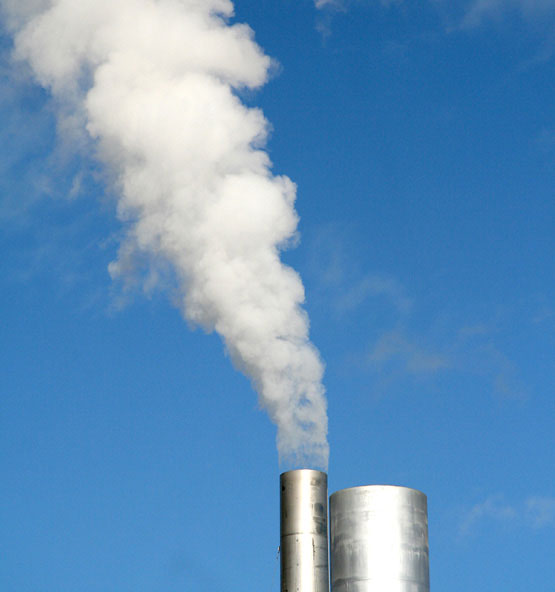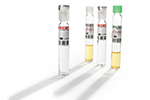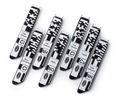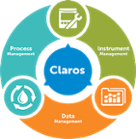-
Products
-
Lab Instruments
-
Lab Meters and Probes
Calibration Standards Sension+ Meters and ProbesOther Reagents
- Chemistries, Reagents, and Standards
-
Online Analysers
Ammonium Analysers Analytical Shelters Chlorine Analysers
- CL17sc
- CL10sc Amperometric
- 9184 sc Amperometric
- Ultra Low Range CL17sc Colorimetric Chlorine Analyser
Ozone Turbidity AnalysersEZ Series Analysers- Iron
- Aluminium
- Manganese
- Phosphate
- Chloride
- Cyanide
- Fluoride
- Sulphate
- Sulphide
- Arsenic
- Chromium
- Copper
- Nickel
- Zinc
- Ammonium
- Total Nitrogen
- Total Phosphorus
- Phenol
- Volatile Fatty Acids
- Alkalinity
- ATP
- Hardness
- Toxicity
- Sample Preconditioning
- Boron
- Colour
- Nitrate
- Nitrite
- Silica
- Hydrogen Peroxide
- EZ Series Reagents
-
Online Sensors and Controllers
Digital Controllers (Transmitters) Controllers (Analogue)
- SC4500
- Orbisphere 366x Ex
- Orbisphere 410/510 Carbon Dioxide
- Orbisphere 410/510 Oxygen
- Orbisphere 410/510 Ozone
- Orbisphere 51x Hydrogen
- Orbisphere 51x Nitrogen
Multi-Parameter pH & ORP Sensors- 1200-S ORP
- 1200-S pH
- 12mm pH/ORP
- 8362 sc High Purity
- Combination pH/ORP
- Differential pH
- Digital Differential ORP
- Digital Differential pH
- LCP ORP
- LCP pH
Conductivity Sensors- 3400 Analogue Contacting
- 3400 Digital Contacting
- 3700 Analogue Inductive
- 3700 Digital Inductive
- 3798 sc Electrodeless
- 9523 Cation Conductivity
- 9525 DCCP System
-
Automated Lab Systems
Automatic Laboratory Analyser
- Multiparameter Online Panels
- Claros Water Intelligence System
-
Lab Equipment and Supply
Apparatus
- Brushes
- Clamps, Rings & Stands
- Crucibles
- Crucibles & Casseroles
- Dispensers & Droppers
- Grab Samplers
- Oil and Grease
- Other Apparatus
- Pipet Aids
- Pipettes
- Racks
- Stir Bars
- Tubing
- Weighing Accessories
General Lab Consumables Glassware/PlasticwareInstruments -
Microbiology
Accessories and Chemicals Dehydrated MediaLabware
- Accessories
- Funnels, Pumps & Manifolds
- Microbiology Filters
- Petri Dishes & Accessories
- Sampling Bags
- Vials, Tubes, Bottles & Racks
- Samplers
-
Test Kits & Strips
Test KitsSingle Parameter Test Kits Test Strips
-
Hach eLearning
Lab Product Training Process Product Training
- AN-ISE sc
- Amtax sc
- B3500
- B7000
- CL17sc
- Differential pH Sensor
- Filtrax Sample Filtration Systems
- LDO sc
- Nitratax sc
- Orbisphere 6110
- Phosphax sc
- SC1000
- SC200
- SC4500
- Solitax sc
- TU5300sc/TU5400sc
-
Lab Instruments
-
Parameters
-
-
Software Solutions
-
Claros Water Intelligence System
Product Pillars Process Management
- Solutions For:
- BOD/COD Removal
- Nitrification/Denitrification
- Phosphorous Removal
- Sludge Management
Data Management- Solutions For:
- Collection
- Visualization & Analytics
- Reporting
- Data Accuracy
Instrument Management- Solutions For:
- Maintenance
- Troubleshooting
- Remote Access
- Lab and Process Comparison
Industry Challenges Regulatory Compliance Cost Savings Remote Operations Process Optimisation Equipment MaintenanceClaros News Claros Software Release Notes
-
Claros Water Intelligence System
- Industries
- Service
- News & Events
United Kingdom
Choose your country or region:
Europe
Americas
Asia - Australasia
- Australia
- Mainland China
- India
- Indonesia
- Japan
- Malaysia
- New Zealand
- Philippines
- Singapore
- South Korea
- Thailand (Thai)
- Taiwan
Middle East - Africa
Semiconductors and Electronics
![]()
"Be Right" when it comes to Ultrapure Water Quality Monitoring and Analysis
Semiconductor and chip fabrication plants need to use the highest quality water (called Ultrapure Water or UPW), to produce everything from microchips, to LEDs, smart phones, flat panel monitors, and silicon wafers and more.
Ultrapure Water (also known as highly purified water or HPW), is water that is free from impurities and contaminants such as microbes, minerals and bacteria. It is produced under stringent specifications and guidelines.
High Water Consumption = High Costs, Water Scarcity Issues
A large fabrication plant can easily use upwards of 40 million litres of Ultrapure Water every day in fab processes such as water polishing, clean rinse, dicing and back grinding and of course Ultrapure Water production.
This high water consumption means that other challenges include:
- Water conservation, recycling and water reuse
- Quality defects due to rinse fouling
- Chemical reduction
- Energy and operational cost savings
- Contaminant removal (related to toxic materials and chemicals in the wastewater discharge)
- Maintain compliance regulations – specifically around Total Organic Carbon (TOC) and silica
Get Start-to-Finish Confidence with Hach
Let Hach ® be your water partner. With our online and lab solutions with real-time process control, we can help you ensure the high standard of Ultrapure Water quality you require, optimise component usage, maximise the effectiveness of your watercycle, boost operational efficiency, reduce equipment downtime and more.
- View the Semiconductor brochure and Selection Guide for Electronics & Semiconductor Water Applications for full information.
From source water, to wastewater monitoring and analysis, to Ultrapure Water, you can depend on Hach.
Semiconductor Manufacturing Process Overview
![]()
-
Mains Water
-
Ultrapure Water Production
-
Recycling System
-
Ultrapure Water Loop
-
Rinsing Water
-
Chemical Mechanical Planarization
-
Fabrication
-
Wastewater Treatment
-
Discharge
-
Organic Industrial Wastewater
-
Pretreated Recycled Water
Process Overview
|
Pretreatment |
|||||||||||
| Raw Water Tank | Media-filter MMF ACF | Deionization (Optional) | Reverse Osmosis (Double Pass Common) | Make-up Plant | |||||||
| Primary | |||||||||||
| Ion Exchange | UV Treatment (185 nm) | Degasifier (Optional) | Permeate Tank | ||||||||
| Ultrapure Water Tank (Ozonation Optional) | UV Treatment (185 nm) | Hexagonal boron nitride, h-BN | Degas (Tower or Membrane) | Polish Plant | |||||||
| Fabrication | Point of Use Filters | Final Filters | Polish Mixed Bed | ||||||||
Fabrication Flow Chart
|
Ultrapure Water Consumption in Semiconductor Fabrication Process |
||||||||
| Silicon Thinning * (Backgrinding) |
SiO 2 Layer Formation |
Photolithography * (Lithography) |
Etching * | |||||
| Stripping * | Electricity Flow Stabilization |
Electroplating * |
Diagram key *Ultrapure Water consumption and wastewater generation |
|||||
Symbol Key
-

Reduce Fresh Water Consumption
-

Reduce Discharge Volume
-

Reduce Electricity Usage
-

Reduce Fuel Consumption
-

Reduce Operational Cost
-

Improve Productivity
-

Reduce Compliance Risk
Featured Semiconductor & Electronics Applications
Influent/Raw Water
It all starts at the source. The consistency and purity of your influent or raw water greatly affects the quality of water used throughout the semiconductor production process. With strict standards and guidelines to adhere to, it is imperative that manufacturing plants have the proper water testing systems, equipment, and technology in place from the beginning, to meet regulations and production time.
By utilising accurate instrumentation with real-time analysis to monitor changes to incoming water quality, filter effectiveness and microbiological activity, you can stay at the forefront of potential challenges and establish a reliable system that helps to minimise costs.
![]()
Reduce Fresh Water Consumption
Suggested parameters to monitor:
View Hach's Solutions
pHD sc: Digital pH sensor - General Purposes
BioTector B7000i Online TOC Analyser
SC1000 Controller Probe Module for up to 4 Sensors
3700sc Digital Inductive Conductivity Sensor
BioTector B7000 TOC/TN/TP Analyser
SC1000 Controller Display Module
3400sc Digital Contacting Conductivity Sensors
SC4500 Controller with Prognosys and LAN + mA Outp

Production/Process Control
During the production of microchips, the first step is to create a substrate of monocrystalline silicon which is then used to create discs or wafers. Whether rinsing or positioning the individual components on a disc or wafer, the key factor in each stage of production is purity.
All processes need to be performed precisely without any impurities present. Airborne particles and rinsing agents need to be strictly monitored in clean rooms with the rinsing agents being as pure as possible. Guaranteeing the quality of the Ultrapure Water requires the use of highly sensitive water analyses in as low concentrations as possible.
-

Reduce Operational Cost
-

Improve Productivity
Suggested parameters to monitor:
- Ultrapure Water Conductivity Combined with Hach Conductivity Certification System (Purecal)
- Ultra-low Turbidity
- Ultra-low Chlorine
- Silica
- Sodium
- Dissolved Oxygen (DO)
- Dissolved Hydrogen
- Dissolved Carbon Dioxide
- ATP
View Hach's Solutions
Solitax sc Sensor - Turbidity + Suspended Solids
SC1000 Controller Probe Module for up to 4 Sensors
TU5300sc Low Range Laser Turbidimeter
3700sc Digital Inductive Conductivity Sensor
Orbisphere 3100 Portable Oxygen Analyser
SC1000 Controller Display Module
TU5200 Benchtop Laser Turbidimeter
3400sc Digital Contacting Conductivity Sensors
SC4500 Controller with Prognosys and LAN + mA Output
Orbisphere 312xx Hydrogen Sensor
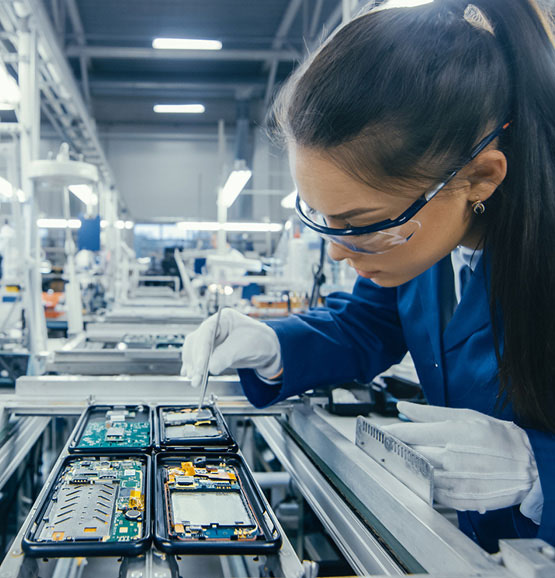
Effluent Treatment
The demands to minimise environmental impact combined with the necessity of clean water sources are posing many limitations for current and future facilities. Effluent management is a journey that evolves from laboratory measurements to automatic online process control and finally to smart optimisation systems.
From chemical neutralisation, to sampling and sludge treatment, prominent and effective monitoring can help reduce waste and treatment operation costs. Act in real time to fluctuating parameters while maximising efficiency and minimising violations at the systemic level with a continuous, reliable, and accurate water analysis system implementation.
![]()
Reduce Discharge Volume
Suggested parameters to monitor:
- Turbidity
- Suspended Solids
- pH
- Fluoride
- Aluminium
- Phosphate
- Copper
- Iron
- Total Organic Carbon (TOC)
View Hach's Solutions
pHD sc: Digital pH sensor - General Purposes
Phosphax sc Phosphate Analyser
BioTector B7000i Online TOC Analyser
Solitax sc Sensor - Turbidity + Suspended Solids
SC1000 Controller Probe Module for up to 4 Sensors
TU5300sc Low Range Laser Turbidimeter
BioTector B7000 TOC/TN/TP Analyser
SC1000 Controller Display Module
TU5200 Benchtop Laser Turbidimeter
Filtrax Sample Filtration Systems
SC4500 Controller with Prognosys and LAN + mA Output
BioTector B3500ul TOC Analyser
EZ1031 Phosphate Analyzer (Vanadate Yellow Method) PO₄-P
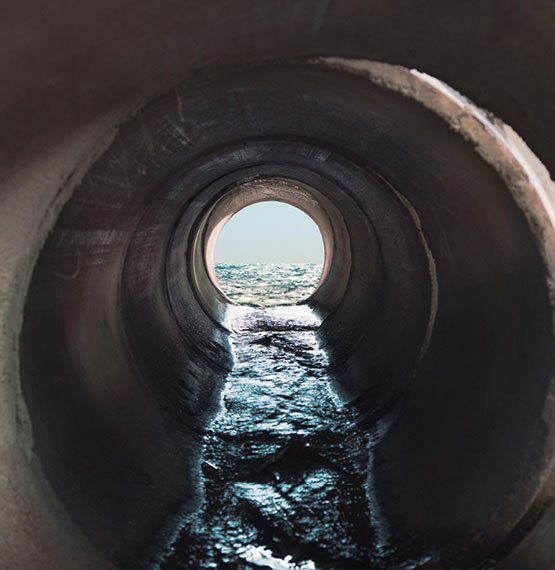
QA/QC Lab
Control of high-volume manufacturing processes can be challenging due to excessive volumes of process data, tools, and monitoring systems. Avoiding abnormal processing conditions, breakdowns, and human error is crucial to optimising quality control. When you combine your QA/QC lab check with real-time process measurements, you are ensuring the process equipment remains validated and within a tolerance window.
Understanding the methodologies available to your specific testing needs will enable you to make the right decisions regarding your plant and final product. Take out the guesswork.
![]()
Reduce Compliance Risk
Suggested parameters to monitor:
- Aluminium
- Calcium
- Chloride
- Colour
- Copper
- Fluoride
- Hardness/ Alkalinity
- Iron
- pH
- Phosphate
- Silica
- Sodium
- Total Organic Carbon (TOC)
- Turbidity
View Hach's Solutions
SC1000 Controller Probe Module for up to 4 Sensors
SC1000 Controller Display Module
SC4500 Controller with Prognosys and LAN + mA Output
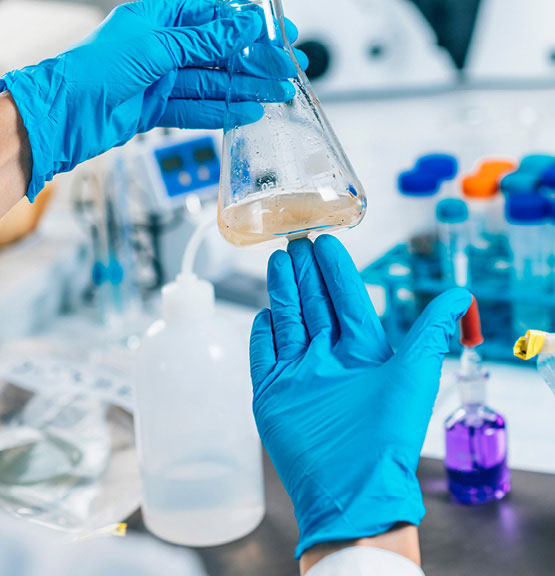
Water Reuse
Reducing environmental impact is a key reason to optimise water reuse. Water reuse, including reclaimed and recycled water, is one method facilities can utilise to enhance sustainability practices and safeguard water quality standards by reducing the plant's dependency on external water sources.
With water scarcity as a serious concern worldwide, there is an emergent need to address the impact of the production process' water consumption and consider ways in which we can optimise water reuse in the future while still ensuring quality products.
Recovering and reusing wastewater from a manufacturing process will require some form of treatment—basic or rigorous. By monitoring for parameters and compounds such as pH, TOC, BOD, COD and TSS, from start to finish, treatment operators will be equipped to make better informed decisions and have the knowledge they need to continually assess the water quality and advance the efficiency of the reuse treatment process.
![]()
Reduce Operational Cost
Suggested parameters to monitor:
- Ultrapure Water Conductivity
- Ultrapure Water pH
- Ultra-low Turbidity
- Ultra-low Chlorine
- Silica
- ATP
View Hach's Solutions
pHD sc: Digital pH sensor - General Purposes
Solitax sc Sensor - Turbidity + Suspended Solids
SC1000 Controller Probe Module for up to 4 Sensors
TU5300sc Low Range Laser Turbidimeter
3700sc Digital Inductive Conductivity Sensor
SC1000 Controller Display Module
TU5200 Benchtop Laser Turbidimeter
3400sc Digital Contacting Conductivity Sensors
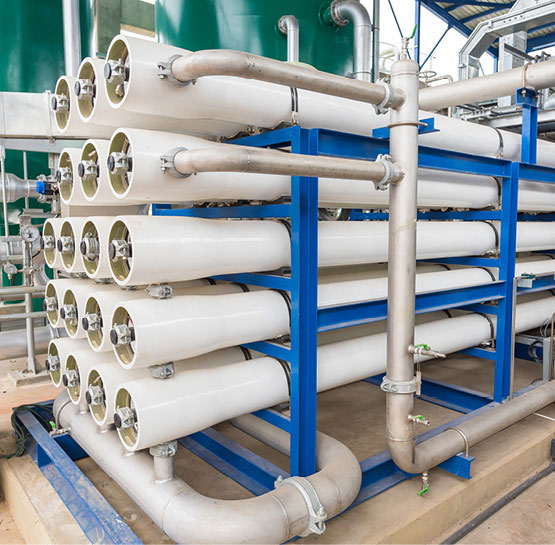
Steam and Power
Monitoring is critical. Improper feedwater, impurities, condenser tube failure and excessive air are just a few of the pitfalls/hazards that can lead to system fouling, malfunctions, lengthy repairs and expensive unexpected costs.
With timely and accurate measurement, you can quickly identify issues (corrosion, iron transport, fouling, etc.), that could impair production and shorten the life of your equipment. Protect against microbial growth inside cooling towers, corrosion to piping, condensers and dryers over time, and potential leakage in heat exchangers by utilizing continuous, accurate monitoring and analysis tools.
-

Reduce Electricity Usage
-

Reduce Fuel Consumption
Suggested parameters to monitor:
- Conductivity/Total Dissolved Solids
- Silica
- pH
- Dissolved Oxygen (DO)
- Free & Total Chlorine
- Total Organic Carbon (TOC)
- Total Hardness
- Ammonia
- Sodium
View Hach's Solutions
pHD sc: Digital pH sensor - General Purposes
BioTector B7000i Online TOC Analyser
AN-ISE sc Ammonium + Nitrate Sensor
SC1000 Controller Probe Module for up to 4 Sensors
3700sc Digital Inductive Conductivity Sensor
BioTector B7000 TOC/TN/TP Analyser
SC1000 Controller Display Module
3400sc Digital Contacting Conductivity Sensors
SC4500 Controller with Prognosys and LAN + mA Output
